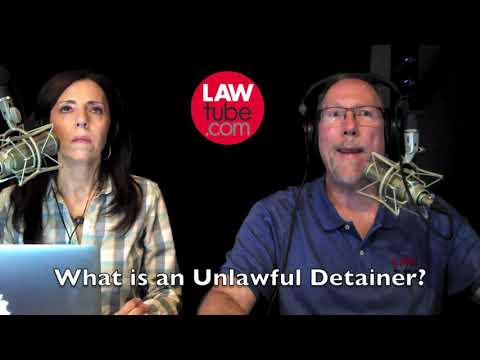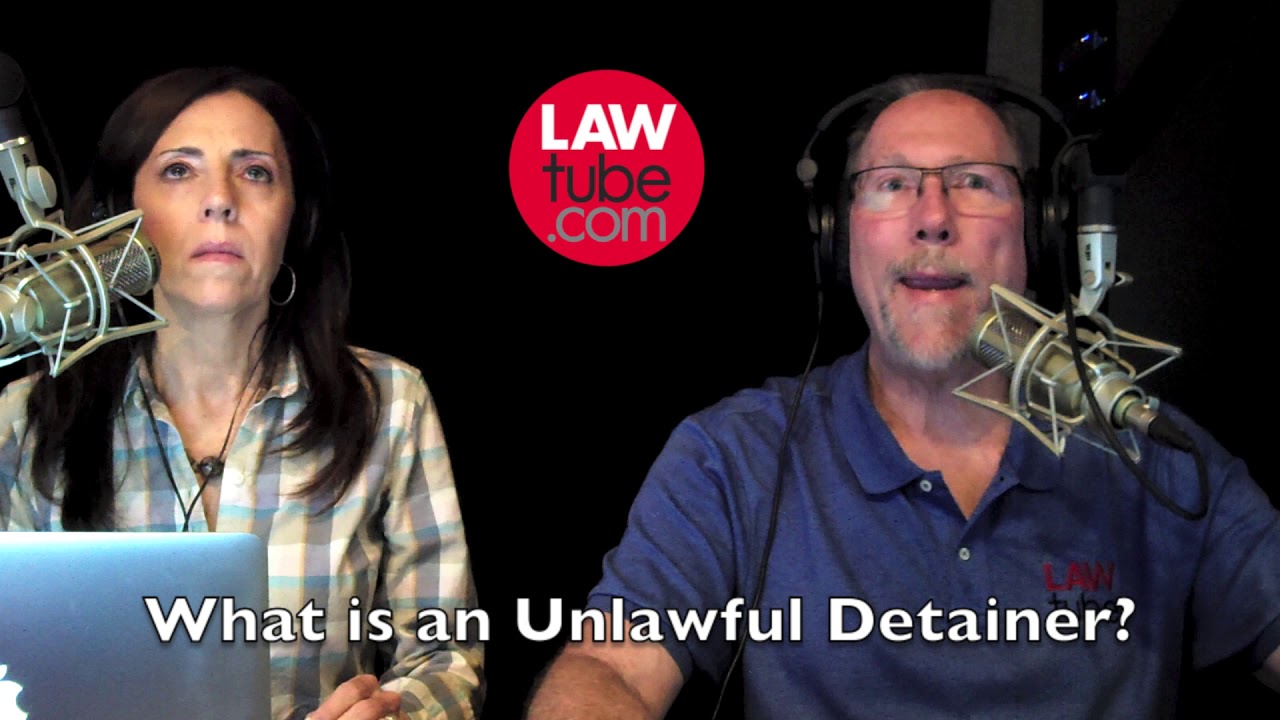Unlawful detainer is a legal term that might sound unfamiliar at first, but it actually holds great significance in the realm of property law. It refers to a situation where a tenant unlawfully continues to occupy a property even after their right to do so has expired. This intriguing concept encompasses the delicate balance between a property owner’s rights and a tenant’s obligations. Understanding unlawful detainer can shed light on the intricacies of eviction processes and the legal mechanisms in place to protect both parties involved. With its roots deeply embedded in property law, unlawful detainer sparks curiosity about the different scenarios that can lead to such a situation, such as lease violations, holdovers, or failure to pay rent. Delving into the world of unlawful detainer reveals the complexities of tenant-landlord relationships and the potential legal battles that can arise. Whether you are a property owner seeking to regain possession of your property or a tenant looking to understand your rights, exploring the realm of unlawful detainer can provide valuable insights into the legalities surrounding property occupancy.

Unlawful Detainer
| Term | Description |
|---|---|
| Definition | Unlawful Detainer refers to a legal process through which a landlord seeks to regain possession of a property from a tenant who is in violation of their lease agreement or has refused to vacate the premises after their tenancy has expired. |
| Grounds for Filing | Typically, a landlord can file an Unlawful Detainer action if the tenant fails to pay rent, breaches the terms of the lease, causes significant damage to the property, engages in illegal activities on the premises, or overstays their lease term without permission. |
| Legal Process | Unlawful Detainer proceedings vary by jurisdiction, but generally involve filing a complaint with the appropriate court, serving the tenant with a summons and complaint, conducting a hearing, and obtaining a judgment for possession. If the landlord prevails, they can then seek a writ of possession to regain control of the property. |
| Tenant Rights | Tenants facing an Unlawful Detainer action have the right to dispute the claims made against them in court, present evidence in their defense, and seek legal counsel for assistance. They may also be entitled to a reasonable amount of time to vacate the premises before being forcibly evicted. |
| Eviction Process | While an Unlawful Detainer action initiates the legal process, it does not automatically result in eviction. If the tenant remains in possession of the property after a judgment for possession has been obtained, the landlord must obtain an eviction order from the court and enlist the assistance of law enforcement officials to physically remove the tenant. |
| Consequences | A successful Unlawful Detainer action can lead to the eviction of the tenant, a monetary judgment for unpaid rent or damages, and the potential for the tenant to be held responsible for the landlord’s legal fees. Additionally, an Unlawful Detainer filing may negatively impact the tenant’s rental history, making it challenging to secure future housing. |
“The Legal Showdown: Uncovering the Unlawful Detainer”
Understanding Unlawful Detainer: A Comprehensive Guide
When it comes to legal matters surrounding property, one term that often arises is “unlawful detainer.” Unlawful detainer refers to a specific legal process that allows landlords to evict tenants who have violated the terms of their lease agreement or failed to pay rent. In this article, we will delve into the intricacies of unlawful detainer, exploring its definition, process, and potential consequences for both tenants and landlords.
What is Unlawful Detainer?
Unlawful detainer is a legal term used to describe the process by which a landlord can regain possession of their property from a tenant who is unlawfully occupying it. This typically occurs when the tenant has violated the terms of their lease agreement, such as by failing to pay rent or engaging in illegal activities on the premises.
In most jurisdictions, landlords must follow a specific legal process to initiate an unlawful detainer action. This process typically involves serving the tenant with a written notice to vacate the property, followed by filing a lawsuit in the appropriate court if the tenant fails to comply.
The Unlawful Detainer Process
The unlawful detainer process varies slightly from jurisdiction to jurisdiction, but generally involves the following steps:
1. Notice to Quit: The landlord must serve the tenant with a written notice to quit or vacate the premises within a specified period. This notice must comply with local laws and regulations and typically provides the tenant with a chance to cure the violation or vacate the property.
2. Filing the Lawsuit: If the tenant fails to comply with the notice to quit, the landlord can file an unlawful detainer lawsuit in the appropriate court. The landlord must pay the necessary filing fees and provide evidence of the tenant’s violation of the lease agreement.
3. Serving the Summons and Complaint: Once the lawsuit is filed, the landlord must serve the tenant with a summons and complaint. This legal document notifies the tenant of the lawsuit and provides them with an opportunity to respond within a specified period.
4. Court Hearing: If the tenant fails to respond to the summons and complaint, the court may issue a default judgment in favor of the landlord. However, if the tenant does respond, a court hearing will be scheduled to allow both parties to present their arguments and evidence.
5. Judgment and Eviction: If the court rules in favor of the landlord, a judgment will be entered, granting the landlord possession of the property. The court may also award the landlord any unpaid rent or damages. With the judgment in hand, the landlord can then proceed with the eviction process, typically involving law enforcement to physically remove the tenant if necessary.
Consequences of Unlawful Detainer
Unlawful detainer can have serious consequences for both tenants and landlords:
For Tenants: If a tenant is found guilty of unlawful detainer, they may be ordered to vacate the property immediately. This can result in homelessness or the need to find alternative housing quickly. Additionally, the tenant may be responsible for paying any outstanding rent or damages awarded to the landlord.
For Landlords: While unlawful detainer provides landlords with a legal avenue to regain possession of their property, the process itself can be time-consuming and costly. Landlords may also face challenges if the tenant refuses to vacate even after the court has granted the judgment, requiring further legal action and potentially additional expenses.
Seeking Legal Assistance
Unlawful detainer cases can be complex, involving various legal procedures and requirements. If you find yourself involved in an unlawful detainer action, it is strongly recommended to seek legal assistance from an experienced attorney. They can guide you through the process, ensuring compliance with all applicable laws and increasing your chances of a successful outcome.
In conclusion, unlawful detainer is a legal process that allows landlords to evict tenants who have violated the terms of their lease agreement. Understanding the process and consequences of unlawful detainer is crucial for both tenants and landlords to navigate the complexities of property law.

